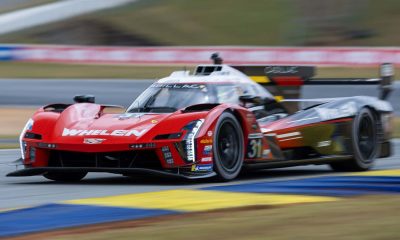Politics
Why did early presidents avoid campaigning? It’s all modern presidents seem to do.

Campaigning has always been an essential part of the political process in the United States, but the methods and strategies have evolved over time. Early American presidents did not engage in personal campaigning, believing it was beneath them and the office they held. Instead, their supporters spread their message through newspapers and other means. However, as the years went by, presidential candidates began to actively campaign, with some notable moments marking the rise of the current model of campaigning. Presidents like Andrew Johnson, Franklin Roosevelt, and Harry Truman played significant roles in shaping the campaign landscape.
One of the best natural campaigners who ran for president is John F. Kennedy, who actively campaigned in the primary elections in 1960 to demonstrate his electability. Ronald Reagan, with his background as an actor, used his charisma and sense of humor to connect with voters effectively during his campaigns. Both Kennedy and Reagan were able to communicate their messages and win elections through their campaigning efforts. Campaigning in a country of over 335 million people may seem daunting, but it remains a crucial tool for candidates to drive news coverage and connect with voters.
Modern presidents have embraced the concept of the permanent campaign, campaigning throughout their term in office for themselves and their party members. This continuous focus on campaigning can take away valuable time from governing and important policy decisions. While some presidents in the past tried to avoid appearing too focused on campaigning, the current trend is for presidents to start campaigning for reelection earlier and earlier. This shift is a response to the incentives of the electoral system, but it raises questions about the balance between campaigning and governing.
Technological advances have revolutionized campaign methods, allowing candidates to reach a wider audience through various platforms like radio, television, and social media. Campaigns have shifted towards targeted outreach to specific demographics, utilizing data and profiles to tailor messages to individual voters. As technology continues to evolve, campaigns are expected to become even more precise in their micro-targeting efforts, creating personalized messages for different voter groups. The future of campaign methods will likely involve continued innovation in technology to reach and engage with voters effectively.
In conclusion, the history of campaigning in the United States has seen significant changes, from early presidents avoiding personal campaigning to the rise of the permanent campaign cycle. Candidates like Kennedy and Reagan have shown the power of effective campaigning in winning elections. As technology advances, campaigns will continue to evolve, focusing on targeted outreach and personalized messaging. The balance between campaigning and governing remains a challenge for modern presidents, as they navigate the demands of the electoral system while fulfilling their duties in office.

-

 Politics3 days ago
Politics3 days agoLatest news on the 2024 election: Biden fundraising in San Francisco and Seattle regions
-

 News3 days ago
News3 days ago£132,000 farmhouse on the brink of 150ft cliff starts demolition as owner evacuated – neighbor vows to stay until his death.
-

 Politics3 days ago
Politics3 days agoThe Biden Administration’s decision to publicly confront Israel over Rafah
-

 Uncategorized3 days ago
Uncategorized3 days agoThe Washington Post – Breaking news and latest headlines, U.S. news, world news, and video
-

 Lifestyle3 days ago
Lifestyle3 days agoSelena Gomez shares adorable photo with Benny Blanco amidst Justin Bieber baby news
-

 News3 days ago
News3 days ago16-year-old accused of defacing World War I statue in New York City
-

 Tech3 days ago
Tech3 days agoHere's an In-Depth Look at How Cadillac Made it to Le Mans In 2023
-

 News3 days ago
News3 days agoBritish family left ‘terrified’ after being surrounded by a shark at a Spanish beach – as 27-year-old mother recounts how the predator ‘zig-zagged’ in the water and pursued her father













